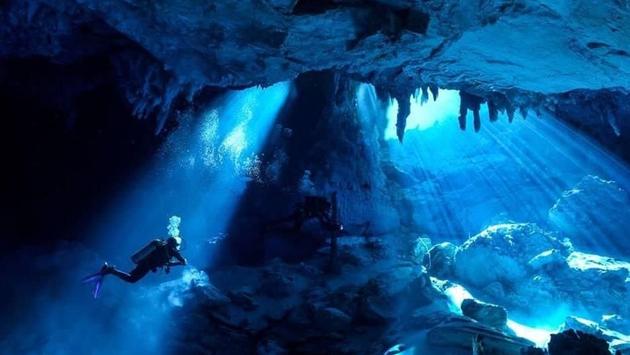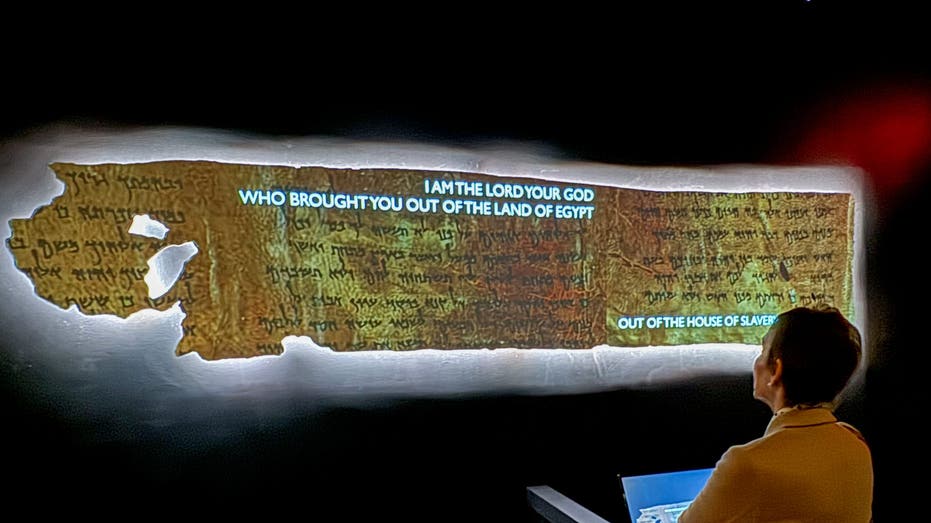- by foxnews
- 08 Apr 2025
The Bonito Bonanza: Brazil's Most Awarded Eco-Adventure Wonderland
Traveling off the grid in South America certainly has its perks.
- by travelpulse
- 20 Aug 2022
- in travel

Saying goodbye to the flat grassland savanna of the Pantanal, we boarded our air taxi for a 50-minute flight south. The earth's indentation that gives rise to the annual flooding of Brazil's Pantanal eventually yields to a mountain range where eco-adventure powerhouse Bonito-population 22,000, elevation 315 meters and 1,033 feet-sits waiting to be explored.
It's located to the east of the Serra da Bodoquena National Park, a vast natural area of rolling hills, tropical savanna, forest, streams, waterfalls, and wildlife. The majority of the park is off-limits for visitation. So, what is there really to see?
If it weren't for tourism's embrace of impacts by globetrotting masses on natural settings and the livelihoods of those being "invaded," a place like Bonito, in the Brazilian state of Mato Grosso do Sul, might have slumbered into the 21st century as a cattle farm frontier.
But a collision of circumstances over the past 40 years has vaulted this town-only founded in 1948-into the global ecotourism limelight. It's been named Brazil's number one ecotourism experiment more than 10 times.
Eco-adventure is a latecomer to the area arriving in the early 1990s when the land had already been acquired for purposes other than recreation. Farmers and ranchers own or control more than 95 percent of the homesteaded terrain. Over time, owners came to see how livestock and farming could be compatible with a growing wave of outdoor adventure seekers, exploiting some of Bonito's remarkable natural assets.
A central tenant of Bonito's success is capacity management. The region's sustainable success is driven in part by gaining access to a dozen or so unique physical spaces than have farming or ranching as their main activity.
The second part of their success is a regulatory framework and training created by the public/private sector and academics collaborating with private landowners. Stakeholders realized that the area's rivers, waterways, and underground lakes possessed some remarkable qualities: the water here is supernaturally clear. It can be so mirror-like that it creates an optical illusion for snorkelers, divers and face-masked floaters who come here to see and interact with nature in remarkable ways. The water here rises through a limestone base that filters out impurities. The area also has limestone "karst" geology. Like Mexico's Yucatan and Puerto Rico's Arecibo areas, there are natural sinkholes still undiscovered-but for a handful that are open to the public on private land.
All three facilities we visited were professionally managed, full-service attractions, with rigid safety protocols. Without this management structure, we'd all be missing Bonito's ecological and geological water wonderland. There are over 30 area day tours, including forest canopy walks to alternate between water encounters.
Within an hour's drive of Bonito, there are three-must do outings, all reachable via private tour or transfer-only. It's essential to reserve attractions in advance or work with a local DMC.
Boca da Onca (Mouth of the Jaguar) about 60 kilometers outside Bonito is this remarkable landscape of rivers, waterfalls, hiking trails and a comfortable visitor center. Small groups walk a total of two miles by first being lowered in rappel vests almost 300 feet to a riverside series of postcard-worthy waterfalls. Natural pools are perfect for swimming beneath a bride's veil waterfall that's an area landmark. The trail continues upwards through jungle paths and across suspension bridges. There are six popular stopping stops for a quick dip along this four-hour tour. Back at the visitor center, enjoy a traditional Brazilian lunch, a caipirinha, and sunset wildlife viewing. We "bagged" our second "big five" species sighting: a giant anteater rooting a termite nest along the road back to town.
Abismo Anhumas (Anhumas Abyss) is under 25 kilometers from Bonito, but a trip back in time. From within a hilly and lush Atlantic Forest-privately owned farms and ranches flank the Abismo-adventurers are lowered 236 feet into the earth, entering a cave and underground lake that's 260 feet deep. About the size of a football field, the cool air and chilly water are manageable by suiting up in a wetsuit, mask, and snorkel for a subterranean exploration of eerie underwater "mounts" millions of years in the making. Some of these white stalagmite tower as high as 60 feet. Scuba is welcome here, with prior arrangements.
Recanto Ecologico Rio da Prata: (Silver River) this is one of South America's short-list spots to experience a facedown river float that's extraordinary. Located some 50 kilometers outside of Bonito, the longer transit is worth it. We arrived late morning for getting suited up and had a tasty lunch. Visitors on this four-hour guided tour are slotted into small-group clusters (12 people maximum) and spaced 30 minutes apart. A 10-minute safari-like land transfer takes swimmers to a lush forest setting with leaping monkeys, over 250 bird species and the headwaters of the Rio da Prata (Silver River).
As our group flopped into the river, we were all aware the river's inhabitants include caimans, anacondas, and piranha. No biggie! Spending almost three hours floating over two kilometers of jungle canopy Brazilian freshwater, your snorkel mask becomes a 3D theatre of aquatic wonder; hundreds of fish, mangrove and fallen tree micro spaces, water bubbling from the sandy bottom, and (yes) a caiman gator watching us with indifference.
Three of South America's "big five" species had eluded us on this visit. But no one left disappointed. Ask your favorite South American selling tour operator if they sell this region. If they say no, ask them why not. Mato Grosso do Sul, for all its isolation and exotic attractions is a South American treasure that can sustainably handle a few more visitors.
Arriving in Bonito can be as simple as taking a connecting flight from Sao Paulo (Campinhas, CGH non-stop to Bonito BYO with Brazilian carriers Gol or Azul). Another option is to arrive at Campo Grande CGR (MGS State's capital). Bonito is a four-hour drive. Our itinerary used an air taxi service from our Fazenda Baia das Pedras to Bonito's municipal airfield. Tourism authorities are dreaming about an air connection with Iguassu Falls, the closest South American "must-see" destination located roughly 400 miles due south of Bonito.
Note that a Yellow Fever inoculation is recommended for visitors.
Bonito is visited year-round. Expect higher temperatures and humidity during the rainy season from October to March, which is the "high season" for wildlife viewing. However, visiting during the dryer months of June to September affords cooler temperatures and lots of sunshine.
Bonito is a grid of paved and unpaved streets, radiating from a pleasant central plaza and along its main street Coronel Pilad Rebua. It's home to many lodging options, travel agents, gift shops, and eateries. There's prosperity and a middle-class vibe to this frontier town. There are dozens of Brazilian and international dining options. The city's unique public phones (what an idea!) are ensconced in giant fiberglass fauna: jaguars, fish, otters.
Lodging options are plentiful and cover everyone from the backpacker to the premium traveler. There are over 70 lodging choices and around 6,000 rooms. We were hosted at the very comfortable and modern Promenade Bonito Suites.
For the latest travel news, updates and deals, be sure to subscribe to the daily TravelPulse newsletter.
- by foxnews
- descember 09, 2016
Ancient settlement reveals remains of 1,800-year-old dog, baffling experts: 'Preserved quite well'
Archaeologists have recently unearthed the remarkably well-preserved remains of a dog from ancient Rome, shedding light on the widespread practice of ritual sacrifice in antiquity.
read more




